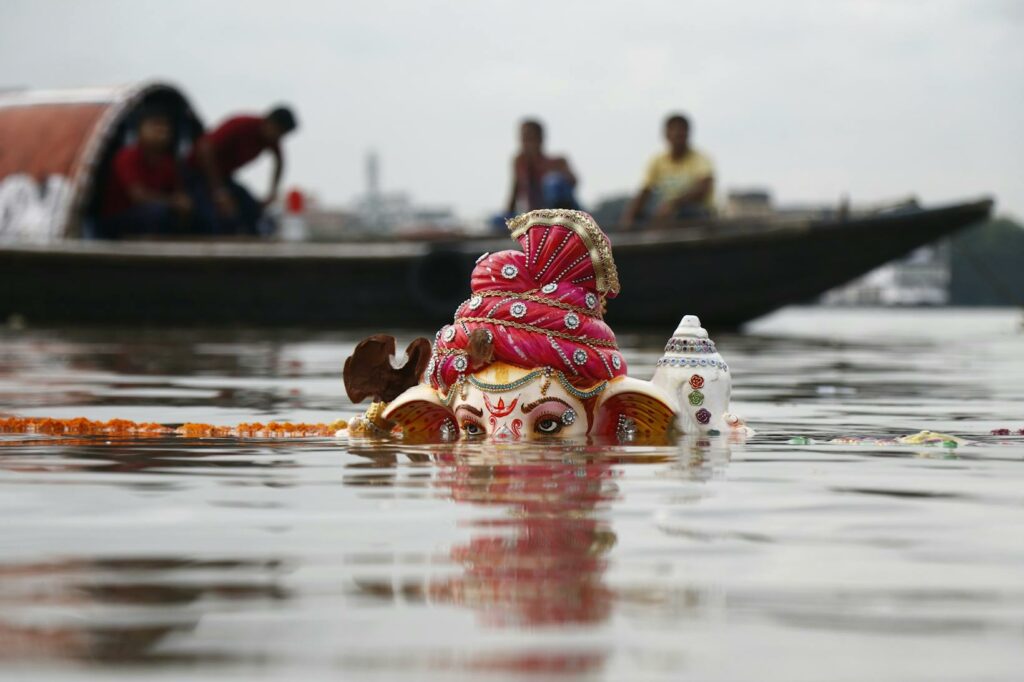Step into a time machine, and let’s journey back to the world of ancient India – a civilization rich in culture and heritage. This article will offer a glimpse into a world that was, revealing the tapestry of traditions, beliefs, and practices that shaped the Indian subcontinent’s cultural landscape.
Culture Of Ancient India
Continuing the exploration into ancient India’s cultural richness, it’s crucial to delve into three fundamental aspects that prominently shaped civilization: Religion, Art and Literature, and Social Structure. Each of these elements tells an integral part of the ancient Indian cultural narrative, proving invaluable in understanding the deep roots of one of the world’s oldest civilizations.
 Religion in Ancient India
Religion in Ancient India
Religion carves out a significant chapter in the vast volume of ancient Indian culture. Predominated by two major schools of thought, Hinduism and Buddhism, religious doctrine influenced every facet of the community, from societal norms to ethical values. For instance, Buddhism, born out of Siddhartha Gautama’s enlightenment around 6th Century BCE, inspired pacifism, meditation, and detachment from material desires. Hinduism, encompassing a vast array of religious beliefs and practices, bestowed ancient India with a pantheon of deities and philosophical teachings.
Art and Literature: Symbols of Aesthetic Grandeur
Ancient India witnessed a glorious period in art and literature. Monumental works in poetry, drama, and philosophy surfaced during this era. The epic tales of Mahabharata and Ramayana, significant contributions of Vedic scholars, illustrate the brilliance of ancient Indian storytelling. Likewise, the sophisticated aesthetic of sculptures found in places like Khajuraho and the grand architecture of Buddhist Stupas are remarkable testaments to the artistic prowess of ancient India.
Social Structure: The Caste System
One of ancient India’s most structured systems is the caste system, fundamentally defining the social hierarchy. It was a system that categorized society into different groups, primarily Brahmins (priests), Kshatriyas (warriers), Vaishyas (traders), and Shudras (servants). Despite its many criticisms, notably regimenting society and promoting social inequality, the caste system played a noteworthy role in organizing society and labor division, thereby contributing to societal stability.
Geographical Influence on Indian Culture
Emergent from the rich tapestry of historic India, the geographical features played a pivotal role in shaping its unique culture. From the flowing rivers to the daunting mountain ranges, each geographical aspect sculpted distinct elements of India’s ancient civilization.
Impact of Rivers
India’s mighty rivers, such as the Ganges, Brahmaputra, and Indus, cradled civilizations and perpetuated growth. Each river symbolized fertility and prosperity, irrigating lands and fostering agrarian societies. The Ganges, arguably the subcontinent’s most sacred river, played a paramount role in shaping spiritual beliefs. Examples include the ritualistic bathing in its waters to cleanse sins or the elaborate Ganges Arti ceremony held at its banks. This harmonious balance between sustenance and spirituality underscores the profound influence of river geography on India’s cultural fabric.
Influence of Mountain Ranges
Mountain ranges, particularly the Himalayas and Vindhyas, cemented an indelible imprint on Indian culture. The Himalayas, with its imposing, majestic peaks, became synonymous with spiritual ascendency. Secluded high-altitude spots served as abodes for hermits and ascetics, reinforcing India’s vibrant tradition of meditation and philosophical introspection. Additionally, the Vindhyas acted as natural dividers, fostering a range of diverse, localized cultures. The southern kingdoms, namely the Cholas and Pallavas, developed intricate temple architectures and cultivated a distinct style of music and dance, like the Bharatanatyam. Conclusively, the mountainous geography contributed significantly to the cultural mosaic of ancient India.
The culture of ancient India was indeed a tapestry of intellectual wisdom, societal norms, and artistic creativity. The legacy of ancient Indian culture, from its literature and art to its scientific contributions, continues to inspire and influence modern India and the world. It’s a rich heritage that speaks volumes about the depth and breadth of human civilization in ancient times.



